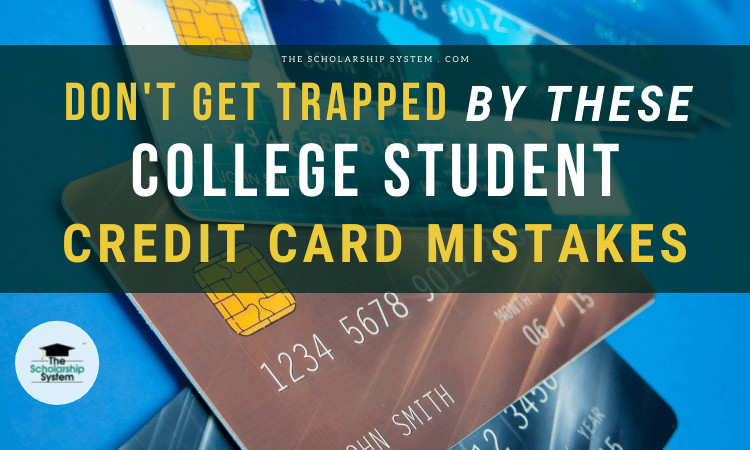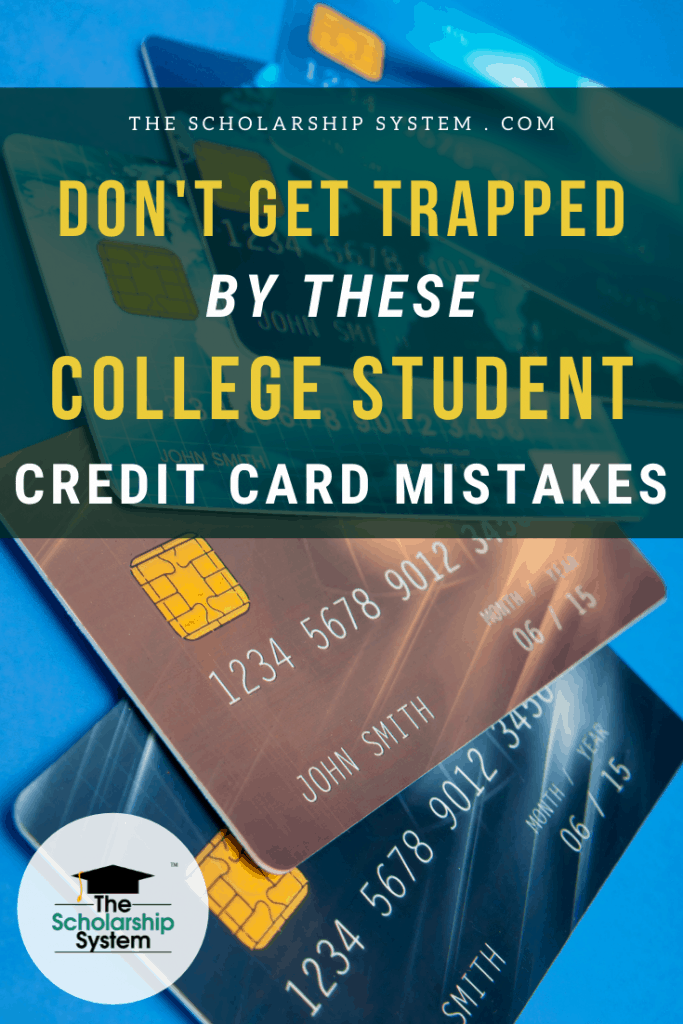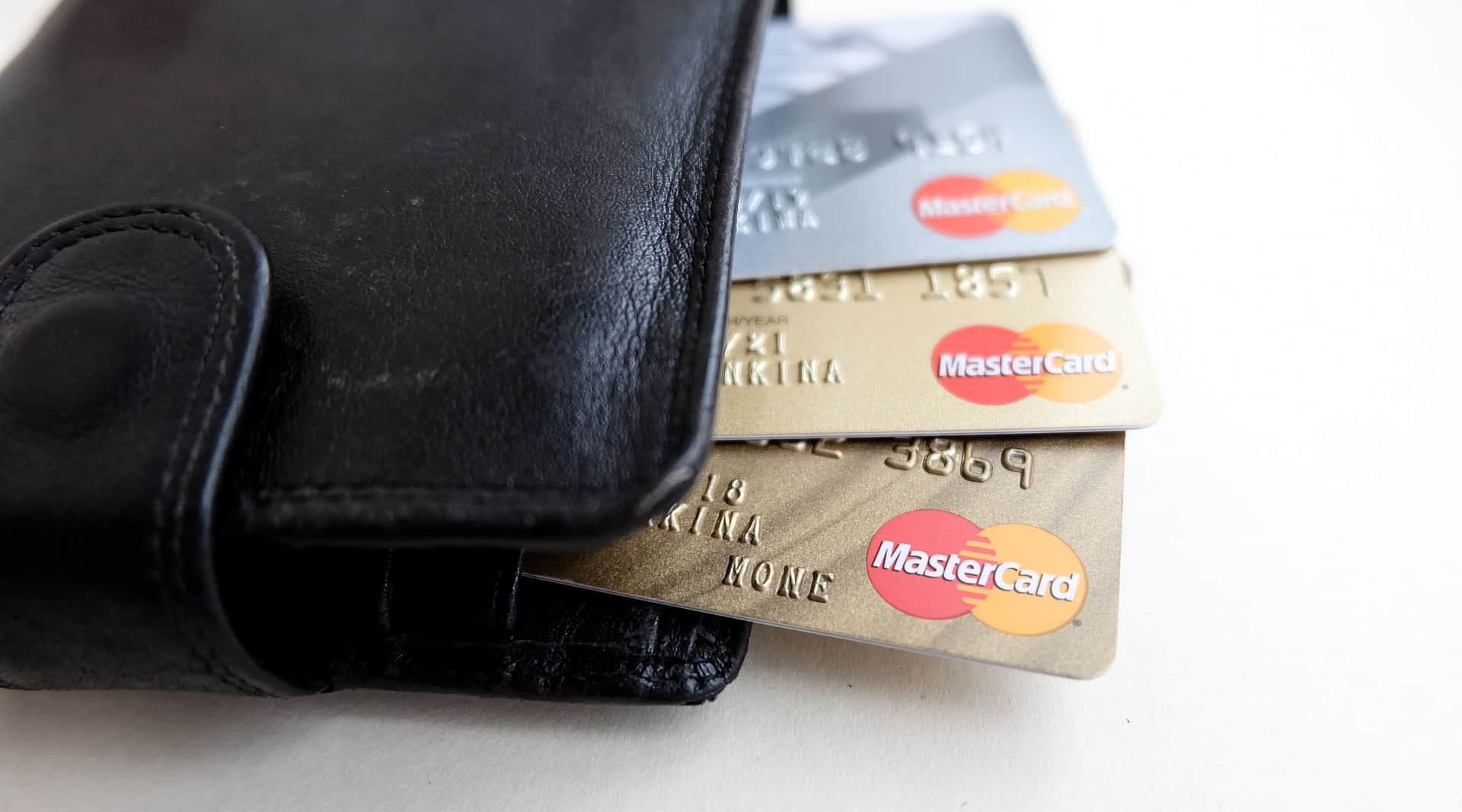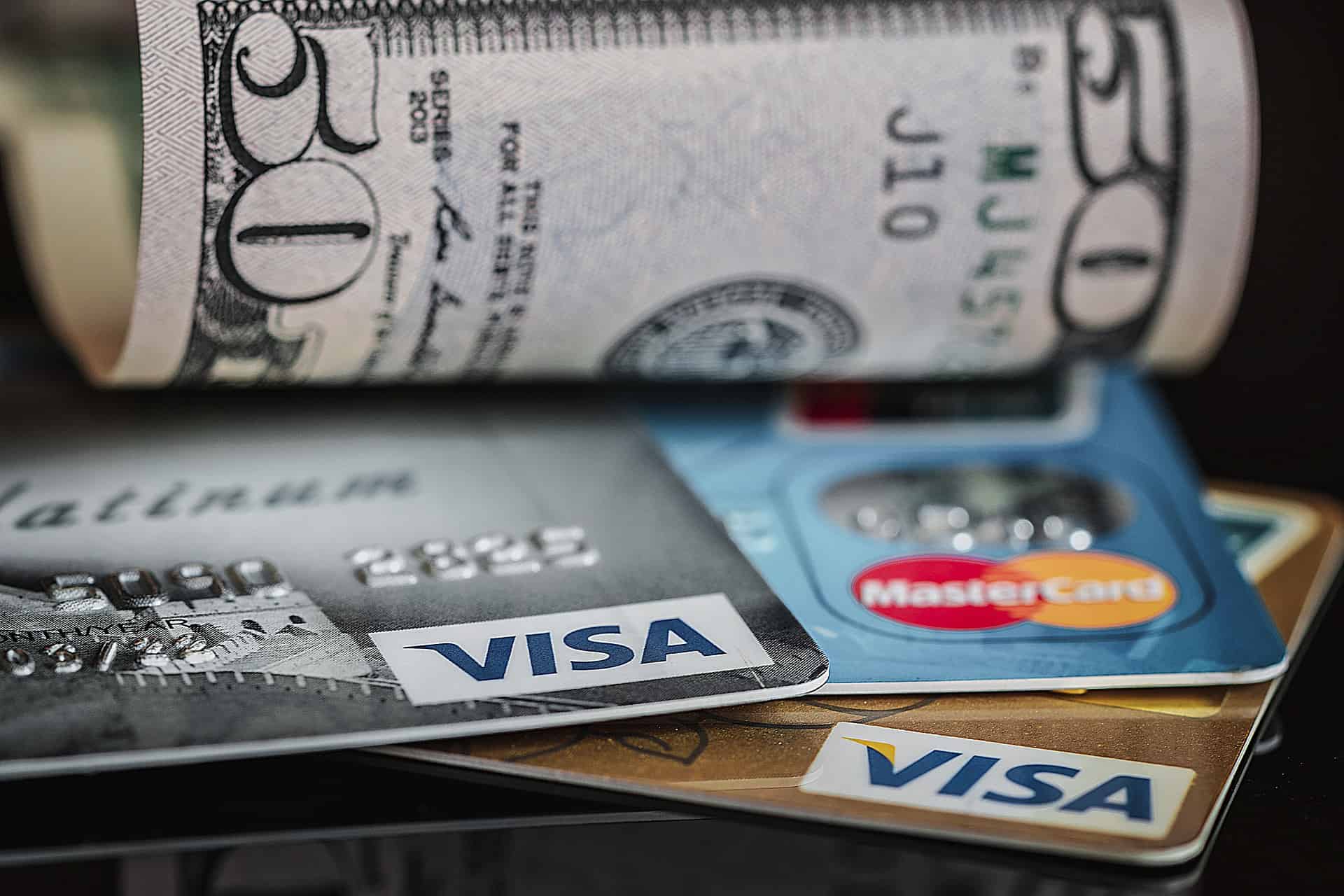Updated on July 14th, 2022
When your student heads off to college, they acquire a level of freedom they may have never experienced before. For many, this includes exploring the world of credit cards. And since many college students have little – if any – education about dealing with revolving debt, they often make credit card mistakes.
In many ways, managing household finances is a skill, one that isn’t usually taught during high school. As a result, many people who sign up for first-time credit cards for students end up in trouble. They simply don’t know how to avoid the credit card mistakes that can lead to long-term debt, ever-growing payments, and even default.
Does your student want to figure out how to cover their expenses without having to use a credit card? If so, scholarships could be the answer. If you and your student would like to find out more about how scholarships can make graduating debt-free possible and how to find stellar scholarship opportunities, sign up for our free college scholarship webinar today! Take a trip over to http://thescholarshipsystem.com/freewebinar to reserve your spot.
Luckily, it’s possible to learn about how to avoid college student credit card mistakes. If you want to make sure your student is prepared for this aspect of personal finance, here’s what you need to know.
Contents
- 1 College Student Credit Card Debt Statistics
- 2 College Student Credit Card Mistakes
- 2.1 1. Not Learning How Credit Cards Work
- 2.2 2. Applying for a Credit Card Without the Means to Repay the Debt
- 2.3 3. Not Having a Budget
- 2.4 4. Getting Too Many Credit Cards
- 2.5 5. Failing to Track Credit Card Spending
- 2.6 6. Focusing on the Rewards and Perks
- 2.7 7. Not Setting Up Automatic Payments
- 2.8 8. Maxing Out Their Credit Cards
- 3 Should College Students Get Credit Cards?
College Student Credit Card Debt Statistics
Before your student tries to open a credit card, it’s wise to consider the impact. While plenty of students use debt responsibly, many others struggle.
In many cases, college students either focus solely on their studies or work part-time. This can make debt payments incredibly hard to handle.
Student credit card debt statistics can give you a clearer picture of what many students face once they acquire this kind of revolving debt. If you’re curious about the average college student credit card debt and other relevant figures, here are some college student credit card debt statistics that can shine a light on the situation.
- If You Look at Monthly Balances, the Average College Student’s Credit Card Debt Is $1,423
- 36 Percent of College Students Have $1,000+ in Credit Card Debt
- 45 Percent of College Students Have Two or More Credit Cards
- 15 Percent of College Students Say Their Credit Scores Have Suffered Due to Late Payments
- Only 51 Percent of College Students Plan to Pay Their Credit Card Balance Off in Full
- 23 Percent of Americans State That Covering Basic Necessities Contribute to Their Credit Card Debt the Most
- 8 Percent of Balances Among Young Adults Are Seriously Delinquent
Many of those statistics are frightening. Often, it’s very easy for college students to make mistakes that leave them in long-term debt or cause them to default. Thankfully, by learning about missteps now, they can hopefully avoid them.
College Student Credit Card Mistakes
1. Not Learning How Credit Cards Work
As mentioned above, most students don’t learn about credit cards in school. In many cases, if they apply for first-time credit cards for college students, they don’t have a full understanding of how they work. This may be their first experience with revolving debt, leaving them ill-prepared for what lies ahead.
College students should spend some time educating themselves about credit cards. By learning the terminology, seeing the impact of compounding interest, reviewing information about annual fees, and more, they can make smarter choices.
2. Applying for a Credit Card Without the Means to Repay the Debt
In some cases, credit cards for students to build credit don’t have strict approval requirements. Additionally, many will offer credit lines that are larger than a student could reasonably manage, especially if they don’t have or maintain long-term employment.
Before a college student applies for a credit card, they need to consider whether paying off the debt is plausible now and in the future. This means being realistic about their current situation and what lies ahead.
Many students are optimistic about their employment options after graduation or underestimate the expenses they’ll face in the future. If they are unrealistic about their expectations, they could find themselves in trouble quickly.
3. Not Having a Budget
Having a budget is a surprisingly important part of the equation. It helps students learn how to manage their money effectively. Then, if they do decide to get a credit card, they’ll be able to stay on target with the payments.
If your student doesn’t have a budget, encourage them to take that step first. Once they are comfortable with managing the money they have, they’ll be better equipped to determine if they can add credit cards into the equation.
4. Getting Too Many Credit Cards
While companies aren’t allowed to market their credit cards to college students aggressively, that doesn’t mean your student won’t be inundated with temptation. Nearly every retailer with a store card actively pushes them to every student, and information about credit cards through banks and credit unions is widely accessible.
With so many choices, some students go overboard. They add one card after another and soon find themselves in trouble.
In most cases, students should start out with just one credit card, suggesting they can comfortably repay that debt. This lets them practice making smart choices, allowing them to build good credit habits before they start adding more to the pile.
5. Failing to Track Credit Card Spending
In many ways, using a credit card doesn’t feel like spending money. You aren’t handing over cash; you’re only swiping a piece of plastic. But that card is an obligation, and it’s easy to lose track of what you owe if you don’t track your spending.
Over time, even small purchases add up. While charging a $5 cup of coffee every weekday doesn’t feel like much, it adds up to $1,300. That’s a big deal, especially if you don’t see that balance coming.
College students need to be vigilant about their spending and balances. That way, they don’t accidentally end up over their head.
6. Focusing on the Rewards and Perks
In the world of credit card advertisements, it’s all about the perks and rewards. The ads are designed to make you focus on things like cashback, miles, and other benefits, hoping you won’t notice things like high-interest rates or massive annual fees.
When your student starts looking for a credit card, they need to focus on the right points. Finding a low APR and a no-annual-fee card is usually far more important. That way, their credit card isn’t costing them money in the form of an annual fee or causing their balance to skyrocket because of a ridiculous interest rate.
7. Not Setting Up Automatic Payments
A big part of every person’s credit score is their payment history. Even a single late payment that becomes 30 days overdue can cause a score to drop by up to 80+ points. If they still don’t make the payment, it only gets worse.
Automatic payments help ensure the money is sent toward the debt on time every month. Practically every card issue offers the service, and it usually only takes a few minutes to set up. It’s an easy way for students to avoid missed payments, making it a worthwhile step.
8. Maxing Out Their Credit Cards
If your student maxes out their credit card, it doesn’t just mean they have a large balance to deal with; it also hurts their credit score. How much of their available credit a person utilizes factors into the equation, and high utilization causes scores to fall.
A student’s credit card utilization rate makes up as much as 30 percent of their credit score. Usually, it’s best to keep the utilization score at or below 30 percent. That means, if they have a $1,000 credit limit, the balance needs to be no higher than $300. That way, they can keep their score in good shape.
Should College Students Get Credit Cards?
It’s important to understand that credit cards aren’t inherently bad things to have. When used responsibly, they can help your student establish their credit and boost their score.
The trouble comes in when they can’t repay what they owe, miss payments, or default. Those not only hurt their credit but create an ever-growing financial burden, one that can be hard to overcome. Any credit card mistakes they make can be incredibly costly, at times overwhelmingly so.
Ultimately, college students should only get credit cards if they can manage them properly. This includes avoiding all of the mistakes above, as well as maintaining a reliable source of income and having room in their budget to pay the balance in full monthly.
If they have that, then getting a credit card may be okay. However, if they have any doubts, it’s better to wait until they are more financially stable.
Does your student want to figure out how to cover their expenses without having to use a credit card? If so, scholarships could be the answer. If you and your student would like to find out more about how scholarships can make graduating debt-free possible and how to find stellar scholarship opportunities, sign up for our free college scholarship webinar today! Take a trip over to http://thescholarshipsystem.com/freewebinar to reserve your spot.









Leave a Reply